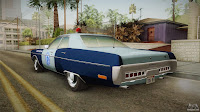© 2017 Christy K
Robinson
This article is
adapted from a chapter in my book manuscript on Anne Marbury Hutchinson.
R
|
andall Holden was one of the Rhode Island men abducted in
1643 by the Massachusetts Bay Colony. He wrote a long, angry letter to the General
Court from his prison cell in Salem.
Holden,
41, Samuel Gorton, 51, and John Green, 49, and other men had been supporters of Anne Hutchinson,
and shortly after founding Pocasset/Portsmouth, had moved to lands they
purchased in January 1643 from the sachem Miantonomo at Shawomet, now called
Warwick, Rhode Island. It was land falsely claimed by Massachusetts Bay Colony,
based upon a fraudulent charter that Rev. Thomas Weld, an agent and envoy of
the Bay, was sending around to important government figures for their
signatures, as if they’d approved it in Parliament.
In the letter, Holden called Gov. Winthrop and the Court the
“Idol General” and “Judas Iscariot’s fellow confessor for hire,” and he’d heard
that Winthrop had said that either the Rhode Islanders (Holden, Gorton, and
Greene, Robert Potter and Richard Waterman) would be subjected to him or
removed to Boston, “though it should cost blood.”
 |
| Warwick to Boston via I-95. Google Maps |
They’d been summoned to Boston and given words of safe
conduct, but when they’d ignored the summons, they’d been violently abducted by
a 40-man force, beaten, and imprisoned in several Massachusetts Bay towns, with
iron fetters on their legs to prevent escape. They were not charged or tried on
their possession of the disputed land, but on new charges of sedition and
heretical religious beliefs—the same charges Anne Hutchinson had faced six years before. Their
conviction was a foregone conclusion, and they were put to hard labor on nearby
farms, still shackled. But they were saved from execution by only two votes of the
General Court. Gorton, a fiery-tempered man in those years (though he later
mellowed and was a credit to Rhode Island), was warned that if he should speak
or write of his blasphemous and abominable heresies, he’d be condemned to death
and executed. Holden, Greene, and the others were similarly threatened with
death if they spoke to anyone but an officer of state or church. They were
“silenced.” After a winter at hard labor, they were banished upon pain of death,
both from Massachusetts Bay and from their homes at Shawomet.
Randall Holden’s letter had a long passage that accused the
MassBay government of knowing Anne Hutchinson’s move to Pelham, where she and
much of her family were massacred, had been preventable, but they said nothing,
making them complicit in the deaths.
Holden, Greene, and Gorton went to England in 1644 to
resolve their grievance and get a charter from the Earl of Warwick, a Puritan
who was an overseer of colonies in the western hemisphere. The three Shawomet
men had to sail from New Amsterdam (New York City) because of the
animosity of Boston’s authorities. They were successful in their quest, but the
King was executed in 1649, which meant that Rhode Island needed a new charter
in 1650-51, when William Dyer was the colony’s attorney general.
* * * * *
 |
| Jagger and Richards on the American Tour in 1972. Wikipedia |
So what brought this story to mind? I learned from a post by New
England Historical Society that on July 18, 1972, Rolling Stones
musicians Mick Jagger and Keith Richards were in jail in Warwick, Rhode Island
(formerly Shawomet, remember), for messing with drugs and scuffling with a
photographer. (I know this drug connection comes as a shock to you, right?)
But over in Boston, 15,000 Rolling Stones fans were short on
“Satisfaction,” and eager to rock out at a Stones concert at the Boston Garden.
The Boston mayor, Kevin White, was concerned that a riot would break out if the
Stones didn’t roll in. This was a distinct possibility, considering previous
violence at concerts around America that summer. He persuaded Rhode Island
police to release the criminals into his custody, and Massachusetts police,
using lights and sirens, rushed the rockers up I-95 to Boston, where opening
act Stevie Wonder had played the longest warm-up set of his career. At 1:00 a.m.,
the Stones arrived at the venue and performed their concert, while the mayor
arranged with the transit authority to keep running so concert-goers could get
home.
For comments from people who attended the concert, see this Facebook link: https://www.facebook.com/NewEnglandHistoricalSociety/photos/a.150432615140239.1073741826.149729011877266/722370191279809/?type=3&theater
For comments from people who attended the concert, see this Facebook link: https://www.facebook.com/NewEnglandHistoricalSociety/photos/a.150432615140239.1073741826.149729011877266/722370191279809/?type=3&theater
 |
| Massachusetts State Police car, 1972 |
The parallels between 1643 and 1972 are not very close, but
it’s fun to compare the Warwick-Boston relationship! This is why we enjoy
history, right?
* * * * *
Christy K Robinson is the author of
this Dyer website and three five-star-reviewed
books on the Dyers, available by clicking these links.
·
We
Shall Be Changed (2010)
· Mary Dyer Illuminated (2013)
· Mary Dyer: For Such a Time as This (2014)
· The Dyers of London, Boston, & Newport (2014)
· Effigy Hunter (2015)
· Anne Marbury Hutchinson: American Founding Mother (2018)
· Mary Dyer Illuminated (2013)
· Mary Dyer: For Such a Time as This (2014)
· The Dyers of London, Boston, & Newport (2014)
· Effigy Hunter (2015)
· Anne Marbury Hutchinson: American Founding Mother (2018)

Thank you for this post. Where is it recorded that the dissidents' live were save by only two votes?
ReplyDeleteThank you.
I found it in a Google Books search. Here's the book that was digitized: The Biographical Cyclopedia of Representative Men of Rhode Island, Page 1, Issue 281. Published 1881.
DeleteThe other facts, and the Holden letter, are sourced in my forthcoming Hutchinson book, but I'm not releasing them in the blog.
Delete